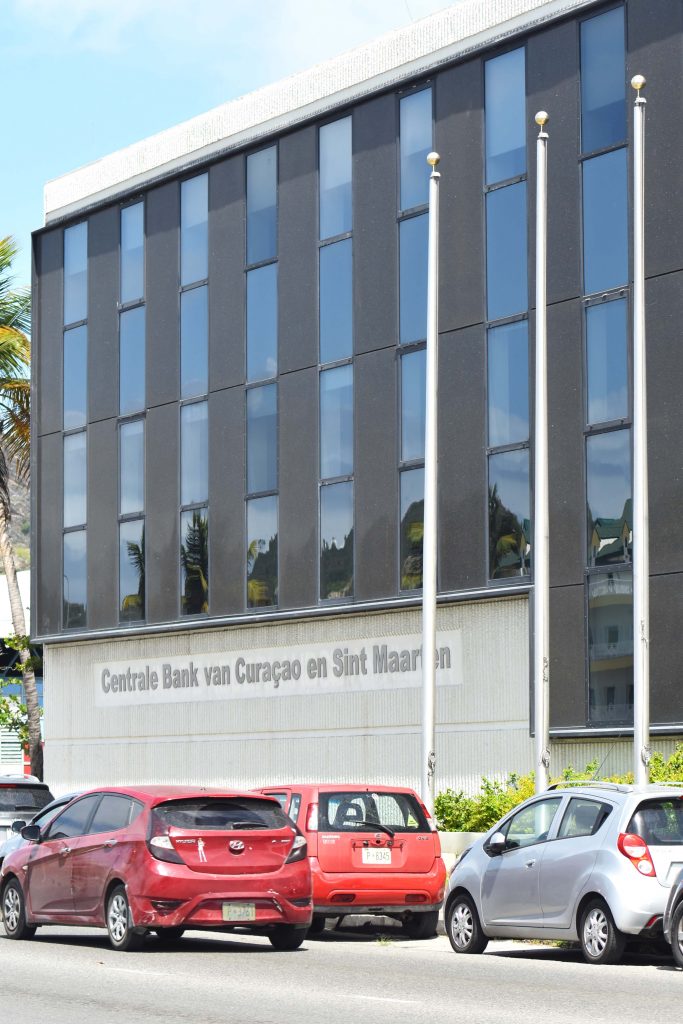Central Bank-report details pandemic’s economic damage

PHILIPSBURG — Stay-over arrivals dropped by 66.7 percent in 2020 and cruise arrivals fell 77.3 percent last year, the Central Bank of Curacao and St. Maarten (CBCS) states in its annual report.
“Cruise tourism performed relatively well in the first three months of 2020 but stopped completely beginning in the second quarter of the year. This forced many medium and large resorts to close their doors during the lockdown and border closure.”
The manufacturing sector suffered a decline of 27.8 percent, after a 3.6 percent growth in 2019. This reflects a decline in yachts repair and service activities in line with the lower number of yachts, particularly sailing yachts, and motor boats in and around the Simpson Bay Lagoon and the harbor.
Real value added in the construction sector decreased 13.7 percent, in line with the lower number of issued building permits. This also reflects the decline in public and private investments in 2020.
Other hard-hit sectors are wholesale and retail (-37.0 percent) and real estate (-24.5 percent).
Commercial banks also took a hit, as interest income dropped faster than interest expenses. This is mainly due to the moratorium policies of most banks, whereby they temporarily eased loan terms and conditions for impacted borrowers.
While St. Maarten had not yet published official labor market statistics for 2019 and 220, the Central Bank estimates the unemployment rate in 2020 at 15.6 percent. That is significantly above the official rate of 9.9 percent for 2018.
The bank attributes the higher unemployment rate to closures and layoffs in the hotel and restaurants sector.
The bank estimates that the number of employed people dropped from 21,767 in 2019 to 19,911 in 2020 – a decline of more than 9.5 percent. Unemployment more than doubles according to the same estimates from 1,517 in 2019 to 3,668 – an increase of 141.8 percent. The size of the labor force more or less stabilized. In 2019 it was 23,284, in 2020 in increased slightly to 23,579.
St. Maarten’s budget deficit ballooned to 196.8 million guilders ($109.9 million) by the end of 2020, more than 12 million above the maximum allowed deficit of 186 million. The country’s debt to GDP ratio increased to 51.4 percent.
The increased budget deficit is caused by an increase of 89.4 million guilders ($49.9 million) in government spending (of which 85.1 million ($47.5 million) was COVID-related) and a drop of 79 million guilders ($44.1 million) in revenue.
It appears from the report that the Dutch government deducted 6.2 million guilders (almost $3.5 million) from the liquidity support it offered in April 2020. This deduction is related to the cost of temporarily housing St. Maarten inmates in Dutch prisons.
Net exports dropped by 162.5 million guilders because the contraction in exports of more than 1 billion outweighed the decline in imports of 847.7 million guilders. This is again due to the sharp decline in revenue from tourism-related activities. Foreign exchange earnings from stay over tourism dropped 61 percent; earnings from cruise tourism decreased 71 percent.
Read also: Central Bank annual report: Economy (maybe) back to pre-pandemic levels in 2024






















